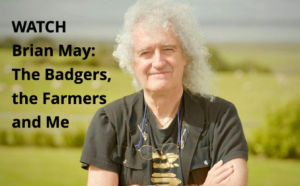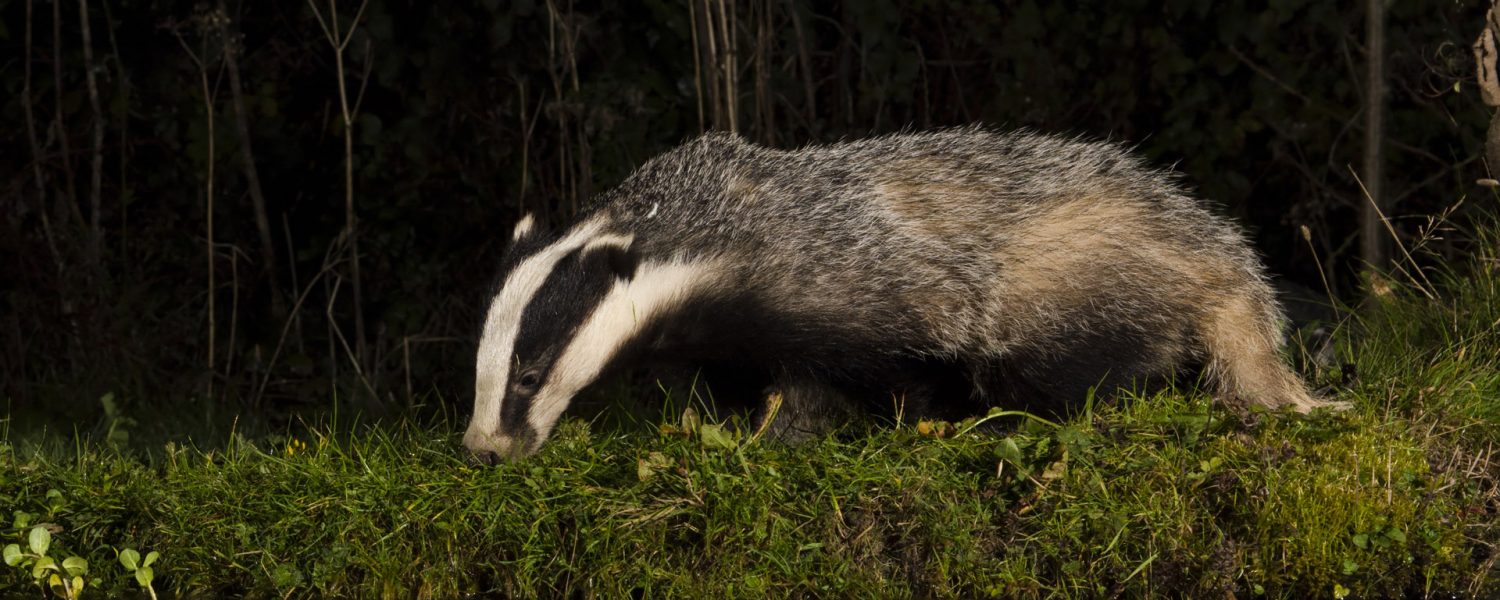
In December 2024, rather than have an independent review, Defra re-appointed some of its familiar advisors to update their 2018 Bovine TB Strategy Review. To consider “new evidence or analysis” published since 2018 that affects the recommendations made seven years ago. The reported aim was to assist work on a new bovine TB (bTB) strategy for England for the spring of 2026. The DEFRA panel was mandated to:
- review evidence and analysis published since 2018
- look for improvements on BTB interventions set out in their 2018 Review
- advise on gaps in the available evidence and disease control tools.
The authors were charged with producing these outputs as three chapters. But the result looks more like an effort to refresh old beliefs and hopes, aiming to keep the little acted-upon 2018 document afloat. The new report says it should be read alongside the 2018 review, but that is hard, with what is now overlapping groups of ideas across two documents. No one seems to have asked if the 2018 review was actually worth building upon or if perhaps ordering it in a more effective way was in order, so as to better the 2018 review.
In the report, the authors have looked selectively at the science, but not discussed its merits in any depth. Instead they have used their preferred thoughts and policy suggestions, and much ‘hunch’ opinion comes through. And rather than accept peer-reviewed published science on the RBCT that they don’t like, they have done some of their own analyses – as posted earlier (here). These analyses are selective and lack scientific rigour. They then finesse the muddle by saying any demise of the RBCT does not really matter anyway. So why did they go to all the effort of the unsuccessful rescue effort then?
The overall impression is of a report trying to help Defra to ‘carry on regardless’, with failing measures and with a few changes here and there, rather than looking forward with clear fresh direction and determination, as the exercise required. After all, the 2018 recommendations were largely, either rejected, not adopted, adopted in part or merely paid lip service to. The result has been a failure to reach the 2025 mid-point policy targets.
 The fact that Daniel Zeichner (now fired and replaced as Minister of State by Angela Eagle, after only a little over a year), reappointed largely the same conflicted group of individuals from 2018, may relate to him coming into the job with the wrong briefing on bovine TB.
The fact that Daniel Zeichner (now fired and replaced as Minister of State by Angela Eagle, after only a little over a year), reappointed largely the same conflicted group of individuals from 2018, may relate to him coming into the job with the wrong briefing on bovine TB.
Zeichner failed to recognize, and act on considerable issues within his struggling bTB department. A department too embedded in the wrong moves, he was too slow to realise. Zeichner and DEFRA simply chose to dismiss early concerns over lack of impartiality in the Godfray re-appointments. A 50,000 strong petition calling for scrutiny of Oxford’s statistics, a six thousand strong petition and public demonstrations in Oxford about the lack of independence of panel members, some of whom held multiple conflicts of interest, made no difference to the Defra back-room advising the Minister. Academics most conflated in the scientific controversies at Oxford and Cambridge Universities would be ‘marking their own homework’ for Defra again, at taxpayer expense.
Labour’s incoming policy emphasis last July was all about moving away from badger culling. But it did not let go of the Defra obsession to focus so highly on badgers, as their unproven significant vector. This suggests that the usual suspects within DEFRA and APHA, by now captured and tribalised by industry interests saw that their best strategy was to play for time. It seems that their aim was to slow down policy change to phase out culling. They were perhaps keen not to risk the truth being made public, which might enable the NFU to reclaim huge costs spent on killing badgers to no effect. Perhaps to play a waiting game in order to bring culling back in a few years time to satisfy strong industry beliefs, spawned by bad (Godfray) science. It is, after all, the measure that Defra has long ‘hung it hat’ on, as the key tool in its mythical tool box. The measure that Boris Johnson as Prime Minister took away from George Eustice back in 2020. The measure that originates largely from Oxford University getting the science wrong, time and time again. And now getting it wrong once more.
This outcome has been on the cards since Defra announced they had made the Godfray panel appointments earlier this year (see here). The panel included Professors Charles Godfray and Bernard Silverman from the University of Oxford, and Professor James Wood University of Cambridge. Godfray and Wood had major roles in supporting badger culling for Defra, and were unlikely to change their rewarded positions on the issue. Also on the panel was Professor Glyn Hewinson, who has spent a professional lifetime (now at Aberystwyth University) working to try to seek new testing methods, and Professor Michael Winter of the University of Exeter. Professor Christl Donnelly was recused from the panel, with prior concerns raised over RBCT badger cull policy statistics.
The update report looks like it has been collated by Defra staff with major input from James Wood, with excessive detail on worries about cattle vaccination. With Bernard Silverman looking at Badger cull statistics. Use of a mix of numbers and roman numerals for paragraphs looks a bit clunky.
The report suggests that there is a ‘small chance’ of being TB-Free by 2038. Saying that it is ‘challenging but achievable’ is not so much a stretch as an impossibility, and Defra have confirmed they have no position on when TB Freedom will occur.
Here the departure from reality looks a bit desperate, it shows a detachment from any understanding of where the epidemic control crisis is truly positioned. Farmer representatives cannot possibly look at this document with anything other than grave concern and scepticism.
This ‘small chance’ of TB-Freedom in 2038, must be maddening to those at the ‘coal face’ who know that the disease control policy is failing and poor scientific advice is the major driver. And it is not due to a lack of investment, but how finances have been managed that is at fault. The self-praise that TB Hub is ‘very good’ is revealing. It has long been a mouthpiece for dubious ideas and advice.
Chapter 3: Surveillance and diagnostics in cattle.
After the introduction and background, the first topic chapter recognizes some of the more obvious and burgeoning issues with the current approaches that were underplayed in the 2018 review and are already published for anyone caring to look:
- Mother to calf infections are important
- That TB-Free status awarded on release from breakdown is often false, undisclosed residual infection is rife, and is driving the epidemic in cattle (and wildlife)
- The low sensitivity of the SICCT test means it should be replaced with the SICT test, the test used successfully in other countries
- Better testing will significantly contract the cattle industry due to the volume of infected animals that have been generated by the failed system since 2001
- Ways to safely quarantine infected cattle for slaughter to prevent spread both to other cattle and wildlife and avoid industry contraction have not been determined
- Data sharing is incoherent, despite £183 Million being spent to-date
 Yet there is a nod to the work by Robert Reed and Dick Sibley and others at Gatcombe Farm in Devon, and elsewhere, as expounded in the ‘Brian May’ BBC Panorama documentary of 2024. The need to be able to use alternative tests is recognized, as is the use of tests without compulsory slaughter of reactors. This opens the way for a more nuanced system. These avenues are mentioned but lost in a list of many other things without weighting or priority. The system to implement such measures is another story and could have been mapped out. Defra is stuck in ‘can’t afford it’ mode, but a report like this won’t help them.
Yet there is a nod to the work by Robert Reed and Dick Sibley and others at Gatcombe Farm in Devon, and elsewhere, as expounded in the ‘Brian May’ BBC Panorama documentary of 2024. The need to be able to use alternative tests is recognized, as is the use of tests without compulsory slaughter of reactors. This opens the way for a more nuanced system. These avenues are mentioned but lost in a list of many other things without weighting or priority. The system to implement such measures is another story and could have been mapped out. Defra is stuck in ‘can’t afford it’ mode, but a report like this won’t help them.
The media headline announcement of the review update on 4th September was a warning that Covid-style control funding is needed – so perhaps a few hundred £Mn or £Bn per year? How likely is this in the current economic climate? How much is really needed and for what? Where is the cost-benefit analysis or doesn’t it look too good? Will the government simply look to pass on the problem to the next administration, as previous ones have done, or look to sort out the long running disaster? Other neglected animal health crises suggest ‘wait and see’ is the present strategy, so the reports vagaries might not have bothered Defra too much.
Chapter 4: The Disease in Cattle
Reading through all the uncertainties and caveats in this section, the reader is led to the conclusion that bTB cattle vaccination is unlikely work any better than it is working now any time soon, and that it might be undeliverable at scale. Some of the claims are un-evidenced and a DIVA test that works is the unconvincing ‘maybe’ of old. This could almost be interpreted as a recommendation to drop the whole thing and let those involved slip away, rather than invest yet more shiploads of funding. It is hard to see any excellence in this direction.
Chapter 5: Cattle movements and Risk-based trading
Obviously linked to diagnostics, the general lack of cattle movement control monitoring and poor biosecurity offers bleak prospects. The problems are well known, but little is being done to improve them. Suggesting that only 25% of Low Risk Area infections are due to cattle movements implies continued denial and/or incompetence. The update fails to identify a credible and rapid way forward to stop what the EU call ‘the British national sport of moving cows around’. The links between biosecurity, risk-based trading, slaughter compensation and a potential insurance approach are further covered in Chapter 8. But until the basic elements of disease control are sorted out (moving diseased cattle infects the herds they are moved to), and the truth separated from the fiction, it is hard to see who is going to believe in, support and enforce any such extensive controls.
Chapter 6: The Disease in Wildlife
Here the authors are writing to defend a failing battle to promote badger interventions. Charles Godfray and James Wood are two of the academics who have pushed them as effective. Godfray via the original Randomised Badger Culling Trial RBCT experiment where he was a DEFRA audit contractor, and Wood being the post 2013 media cheerleader for culling “working” generally, and attacking those questioning biased government propaganda. Predictably they recommend that badger interventions are still necessary to control bTB in cattle.
With Bernard Silverman replacing Christl Donnelly (both at Oxford University Statistics), the face-off between the Paul Torgerson and Donnelly camps over the RBCT analyses that has played out recently in the Royal Society Open Science journal comes to the fore (see here). The review finds in favour of Torgerson on statistical use of rate/count in the ‘battle of the models’, but Silverman has gone beyond his remit to review, and has actually done his own analysis, with code published as Annex 4. He attempts to ‘rescue’ the RBCT, albeit with low statistical significance. However, having diminished the holy-grail RBCT study significance from strong to weak, he has used the wrong output data for his result. When his published model is followed properly, badger culling is shown to have no effect, (see pre-print here). Thus the Godfray report fully invalidates the RBCT – this may take a few weeks to sink in across academia. And of course with the Donnelly 2006 analysis relegated, the plethora of papers that reply on it and/or use the same analytical method fall with it. And there are a lot of them.
Silvermans substantial oversight unravels the arguments made in the rest of the chapter to try to justify the badger interventions since 2013. It is embarrassing for the authors to try to bury their past positions on this issue, and this is the reason so many people said they were unsuitable to undertake the review update. This surely cannot be lost on Defra who put them there. It undermines the whole report.
What else did they get wrong? Well for a start, the pre-printing of the ‘Robertson’ analysis (currently un-reviewed). This work was, one suspects, commissioned by Defra officials to try to discredit (see here and here) the 2022 study showing badger culling to be ineffective. Robertson was seconded to Natural England from APHA for some months to undertake the work. Badger Crowd understands that Godfray suggested that it be pre-printed to back up his unwavering view that badger culling has “worked”. This analysis using unqualified guesswork and simulated data has not moved on since it was shared by Natural England back in 2023. Requests for the code used in the work have been ignored. Badger Crowd understands that it has not been submitted to a journal, and it is not difficult to see why. More on this red herring will be revealed shortly.
Perhaps the largest deception of all is that the Godfray review update attempts to characterise the badger issue as one where key decisions are political not scientific, with progress hampered by unmovable positions by those with extreme views. This is a gross simplification. Hard-core protagonists or deniers have little or no hands-on involvement or power. It is the scientists who have got it wrong, and blaming politicians has come from overconfidence, and an apparent need now to blame others for a mess of their own creation, over nearly three decades.
This smokescreen report is an unsuccessful effort to excuse poor progress and to hide the academic mistakes on this issue over the last 25 years. Godfray and his Oxford colleagues are themselves implicated. The flaws and deceptions have the potential to damage Oxford University and Defra very badly, as Zeichner was warned in the spring. They will damage Labour as well, on whose watch the errors were constructed. If they don’t recognize the scale of the problems immediately and involve a broader team of visibly independent scientists, nothing can change. What is needed is an independent inquiry along the lines recommended by Professor Mark Brewer, head of Biomathematics and Statistics Scotland, in June of this year. Unless that happens, the British cattle and dairy industries are doomed to years, if not decades, of more failure with taxpayers footing the growing bill. £Billions more wasted, decades of cruelty and misery for animals and farmers.
Trying to use genomics arguments to sustain badger interventions as a last ditch effort is fanciful, but that is the route that Defra have taken. They may be preparing to use trap-side testing in the predictable back-route preparation for Test Vaccinate Remove (TVR). It is an effort to replay the very old record to ‘blame the badgers’ to ‘keep the farmers happy’. Who was it who first named the policy ‘lies, deceit and negligence?’ Surely this time the farmers are wiser?
In short, the Godfray reviews in 2018 and 2025 have simply failed to deliver when it comes to setting the scene for resolving the bovine TB crisis in England. Defra is set on a path that was presumably decided with the NFU once Labour took targeted culling away last August. There is practically no chance that central government will fund a Covid-style response to bTB when the science as presented is so incoherent. Maybe confusion and no change is the plan? There is important work to be done to get bovineTB under control, but there is no sound evidenced route to a TB free England in this review. Bring on an independent Inquiry.
Discover more from The Badger Crowd - standing up for badgers
Subscribe to get the latest posts sent to your email.

